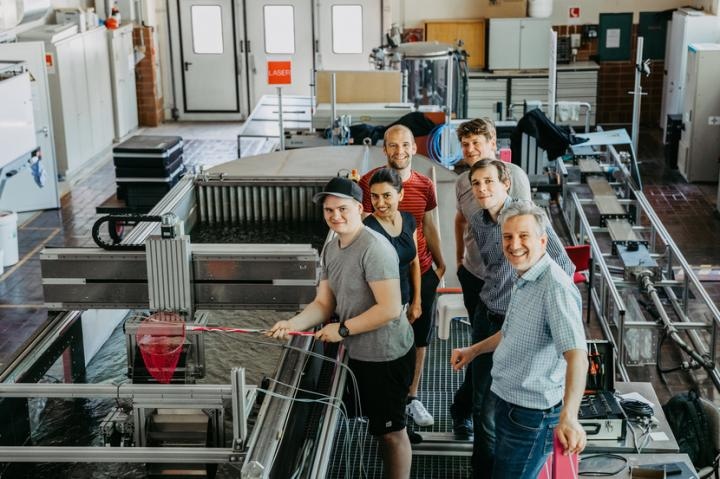Jun 19 2019
Artificial fish surrogates must offer information related to the flow conditions and probable harm to and mortality of fish passing through turbine installations.
 (Image credit: Jana Dünnhaupt)
(Image credit: Jana Dünnhaupt)
According to the Federal Institute for Risk Assessment, until now, up to 450,000 fish are used annually in live animal experiments in German hydroelectric power plants. Those tests—required by domestic regulation that endorses a European directive—assess the capacity of the fish to travel through the turbines and thus evaluate the fish-friendliness of the plants.
The RETERO research project, “Reducing animal testing to establish risk of injury to fish caused by passage through turbines by the use of robotic surrogates, computational fluid mechanics and predictive modeling”, is financially supported by the German Federal Government with 1.4 million euros, and began in March 2019. Its aim is to create partially autonomous robot systems and simulation models that will decrease, and in the long run, will avoid the need for live fish in experiments.
The interdisciplinary research collaboration integrates expertise from ethohydraulics, biology, fluid mechanics, hydraulic engineering, microelectronics, power electronics, and information technology.
The project collaborators of the University of Magdeburg include the Institute of Hydraulic Engineering and Technical Hydromechanics at the Technische Universität Dresden, the Institute for Aquatic Ecology and Fish Biology Jena, and the company SJE Ecohydraulic Engineering GmbH in Stuttgart. The Center for Biorobotics at the Tallinn University of Technology in Estonia is an additional international collaborator.
Following the European Water Framework Directive, German authorities require all run-of-the-river hydroelectric power plant operators to demonstrate with expert reports that the plants are passable for fish and other river wildlife. In 2015 alone, 450,000 fish were used for this purpose, most of which were caught in the wild.
Stefan Hoerner, Institute of Fluid Dynamics and Thermodynamics, University of Magdeburg
This is very traumatic for the fish and the mortality rate is about 10% in the best scenarios.
“It is true that the legislator prescribes the installation of fish protection systems in hydroelectric power plants, but not all of them are fully effective,” continues the fluid mechanics and electrical engineer. “As a result, many animals end up swimming downstream through the turbines. Furthermore, predatory fish and birds like to stand by the installations and wait for prey that is easy to hunt.”
By 2022, Stefan Hoerner and his group, along with coworkers from the Institute for Electrical Energy Systems at the university, expect to create electronic “replacement fish,” which act in ways that are a trait of the different species. Test runs with live fish equipped with sensors will offer the reference data needed for the simulation of fish-like behavior by the autonomous robotic systems.
The imminent robotic fish will also incorporate several acceleration and pressure sensors. The data obtained during their use in hydroelectric power plants will allow the researchers to make projections and predictions about the risk of harm to fauna, without depending on animal testing.